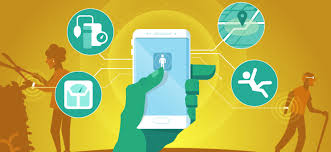 Sensor-based remote monitoring of older adults – a good idea in 2009. That year, GE acquired the sensor-based monitoring technology, QuietCare from Living Independently Group (LIG). Sensors could be placed around the home and alerts transmitted about the older adult – across multiple rooms, motion, and lack of motion could all be detected without a wearable. At that time, the ‘home health monitoring’ market was projected to grow to $7.7 billion by 2012. That did not happen, but fast forward to 2023 – market sizing indicates a sizable ‘remote health monitoring’ space. In the 15 years since the QuietCare acquisition, much has happened – although many players left the space when it was unclear how to make money in it.
Sensor-based remote monitoring of older adults – a good idea in 2009. That year, GE acquired the sensor-based monitoring technology, QuietCare from Living Independently Group (LIG). Sensors could be placed around the home and alerts transmitted about the older adult – across multiple rooms, motion, and lack of motion could all be detected without a wearable. At that time, the ‘home health monitoring’ market was projected to grow to $7.7 billion by 2012. That did not happen, but fast forward to 2023 – market sizing indicates a sizable ‘remote health monitoring’ space. In the 15 years since the QuietCare acquisition, much has happened – although many players left the space when it was unclear how to make money in it.
Today, remote patient monitoring is an established category with government reimbursement. No doubt there are many reasons why remote monitoring makes sense – it has reduced the frequency of home health visits, as well as the dependency on an ever more scarce supply of nurses. Consider that the CMS reimbursement rules cover both acute and chronic disease remote monitoring. And payment sources private (insurance, Medicaid) have expanded. Today’s growing categories for AI-enablement of remote patient monitoring (RPM) of all types of health conditions are expanding at the breakneck pace of AI healthcare innovation.
In today’s world, more older adults are living alone – so remote monitoring of motion matters. More than 40% of women aged 75+ live alone. Many of them are solo agers -- without family near to help them out. And you can believe that tech firms see a market – check out the sheer volume of offerings available today for consumers. These are on the edge of the home security market as well as intended to mitigate the worries of both private home owner and long distance family caregiver. No doubt an increasing number of these will be configurable for detecting (or avoiding detection) of individual categories – including the anti-animal recognition technology, aka 'ignore the cats and dogs moving around. Back in the early LIG days, it was possible that alerts were sent when a cat walked past the sensor.
With the growth of the baby boomer population – remote monitoring will matter even more. Given that 80% of older adults have 2 or more chronic conditions, the health categories, especially those that are reimbursable, will see continued growth. But the motion-sensing categories that include smart cameras, in-home fall detection without a wearable, tracking of trips to the bathroom, lack of motion, etc. will all grow. They offer safety and health benefits depending on the circumstance – and at the lower price points may be adopted by consumers monitoring pets left alone, children home after school, and as with smart doorbells, checking who is outside before opening the door.

 Sensor-based remote monitoring of older adults – a good idea in 2009. That year, GE
Sensor-based remote monitoring of older adults – a good idea in 2009. That year, GE